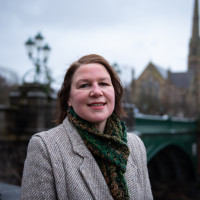In Glasgow, our Green Councillors have been very active on tackling air pollution and agree that the level of air pollution, and in particular the fact that pollutants in Glasgow are breaching legal limits, is unacceptable. Green councillors view this as a public health emergency.
Green Councillors have consistently urged stronger action to tackle air pollution since being first elected to Glasgow City Council, including supporting the proposal for a bike loan scheme way back in 2008.
We have consistently urged the council to introduce a low emission zone and we convinced other parties on the council to commit to that at a meeting in Glasgow City Chambers on 13thSeptember 2012. Councillors agreed that the Council must protect the health of its citizens and ensure full compliance with UK and European air quality laws throughout Glasgow. Councillors supported the call on the Scottish Government and UK Government to work together and take the following five actions to ensure the UK fully complies with EU air quality law by 2015:-
- Fund a national campaign raising public awareness of the impacts of air pollution on health, the causes and solutions.
- Launch a cross-department strategy to tackle air pollution that is led by the UK Cabinet Office, ensuring action on air pollution is included in all relevant departmental business plans by 2013 and includes independently monitored performance measures with incentives and penalties for departments involved.
- Introduce a national framework for Low Emission Zones (LEZs), providing local authorities with the support, both funding and through policy guidance, to establish LEZs in urban areas by 2014.
- Fund further research into the health impacts of air pollution through an appropriate independent body such as COMEAP (Committee on the Medical Effects of Air Pollution)
- Immediately cease all activities seeking to postpone or delay action on meeting legally binding EU air quality standards, or attempting to weaken those standards in the run up to and during the 2013 European Year of Air.
Following this motion, we pushed for low emissions zones to be established as part of the Commonwealth Games in 2014. A feasibility study was completed as part of sustainability strategy by Commonwealth Games organisers but they did not fulfil their promises to create low emission zones around venues (1). Pledges to ban the most polluting vehicles from venue areas provided in Glasgow's bid were not implemented.
In 2014, there was extensive coverage on the problem of air pollution prompted by the reporting of 300 deaths annually in Glasgow linked to poor air quality (2). In Byres Road, the monitor for PM10 particles was broken for seven months. Residents were very concerned about the lack of monitoring and therefore, the lack of information available about any daily levels of air pollution putting health at risk. This situation was resolved after my intervention as the local Green Councillor to ensure a replacement monitoring unit was installed.
In the following year, Glasgow city councillors gave final approval to a 10-year city centre transport strategy, which includes traffic management and cycling measures aimed at reducing air pollution, as well as plans for a Low Emission Zone feasibility study.This strategy referred to the Scottish Low Emission Strategy and a preference to wait until this is fully in place before the Council undertakes a feasibility study, which would help determine the potential emissions limits and area covered by a Zone.
The provision of air quality monitoring at the newly opened Queen Elizabeth University Hospital was secured by Green Councillors in 2015 (3). This was after I contacted council officials to ask for monitoring of the air quality around the hospital. Residents highlighted the risks from air pollution and emissions generated from an increase in the number of buses and other vehicles going to and from the Hospital.
As you may be aware from the data published by Friends of the Earth Scotland, Glasgow's Hope Street is Scotland's most polluted street for Nitrogen Oxide in 2016. It has significantly breached the European Nitrogen Dioxide legal limit over the last decade. Delays in reducing air pollution in this street are risking people lives by aggravating asthma, and could cause heart disease, strokes, and lung cancer. We know that over 2000 Scots die from the effects of air pollution each year, so delays in meeting clean air standards mean even more unnecessary death and suffering(4).
Greens support a low emission zone for Glasgow and our local authority manifesto for the city will include a strong commitment to delivery on this.
We have consistently made public statements in favour of a low emission zone.
We support and have long pushed for 10% of the council’s transport budget to be spend on cycling.
Useful links:
(1) Glasgow 2014: Low emission zones promise 'broken'- http://www.bbc.co.uk/news/uk-scotland-2817774
(2) Table 2 of Health Protection Scotland Briefing - http://www.documents.hps.scot.nhs.uk/environmental/briefing-notes/air-quality-and-mortality-2014-04.pdf
(3)Air pollution levels around South Glasgow University Hospital to be monitored - http://www.eveningtimes.co.uk/news/13840567.Air_pollution_levels_around_South_Glasgow_University_Hospital_to_be_monitored/
(4) Official research estimated that the death toll from air pollution was 29,000 deaths per year, with over 2000 deaths in Scotland (see "The Mortality Effects of Long-Term Exposure to Particulate Air Pollution in the United Kingdom") -
https://www.gov.uk/government/uploads/system/uploads/attachment_data/file/304641/COMEAP_mortality_effects_of_long_term_exposure.pdf
